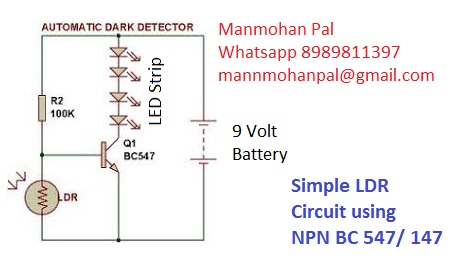How to make Police Siren using a NPN Transistor
Video Link : https://www.youtube.com/watch?v=fUmEKRTb_kc
List of Components
NPN Transistor BC 547 x
1
Buzzer x 1
RGB LED x 1
Resistor 330 Ohm x
1
Resistor 220 Ohm x 1
Circuit Diagram
Steps
1)
Place Transistor on bread board
2)
Connect 330 Ohm resistor between base and emitter
of BC 547
3)
Connect RGB LED between Base and Collector of
the transistor
4)
Connect a
Buzzer with collector
5)
Place a resistor 220 Ohm parallel to the Buzzer
6)
Batter connecter such that +ve on the buzzer and
–ve at the Emitter of the transistor
Manmohan Pal
Email: mannmohanpal@gmail.com
Whatsapp: 8989811397
Facebook Page
Youtube channel
http://electronics4ubymanmohanpal.blogspot.in/p/blog-page_2.html
https://manmohanpal.wordpress.com/led-blinking-circuit/
Twitter: @ManmohanPal15
Blog: http://electronics4ubymanmohanpal.blogspot.com/p/transformer-less-power-supply.html
http://electronics4ubymanmohanpal.blogspot.com/2018/08/what-is-resistor.html











